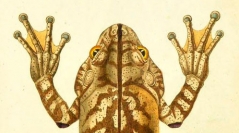

 Zoosystema
40 (6) - Pages 109-121
Zoosystema
40 (6) - Pages 109-121Article 23.9 of the Code, introduced in its last 1999 version, allows the validation, in some cases, of a well known junior synonym or homonym as opposed to a senior synonym or homonym that had been ignored in the literature after 1899. In such cases, the junior nomen qualifies as a nomen protectum and the senior one as a nomen oblitum, a formula redefined in a new sense in this edition. The implementation of this Article requires one to follow strictly several conditions: the invalidation can concern only senior synonyms or homonyms (a junior one cannot be a nomen oblitum); it must have been published in the sense given to this term in the Code (i.e., it cannot have been proposed online in an unpublished electronic document); and evidence must be published that the junior synonym or homonym has been used as valid for the same taxon in at least 25 works published by at least 10 authors in the immediately preceding 50 years and encompassing a span of not less than 10 years. A nomen oblitum remains an available nomen and can be revalidated subsequently, for example in the case of re-evaluation of a subjective synonymy. Since the implementation of this new Article, some authors have used it without respecting these conditions or some of them: in such cases, the nomenclatural act supposed to have been effected under Article 23.9 is null and void, and the regular Rules of the Code must be applied (e.g., through validation of the senior synonym or homonym). A few examples concerning amphibian nomina of the family Hylidae illustrate these statements. The statuses of the nomina, spellings, emendations and combinations Hyla fulva, Hyla gaimardi, Hyla lesueurii, Hyla lesueuri, Hyla prasina, Hyla quoyi, Hyla septentrionalis, Hyla suerii, Hyla sueurii, Rana gaimardii, Istriurus lesueurii, Istriurus sueurii and Trachycephalus marmoratus are discussed. A lectophoront (lectotype) is designated for Hyla septentrionalis and Trachycephalus marmoratus and neophoronts (neotypes) are designated for Hyla fulva, Hyla gaimardi and Hyla sueurii.
Nomen protectum, nomenclatural act, original and subsequent spelling, unjustified emendation.